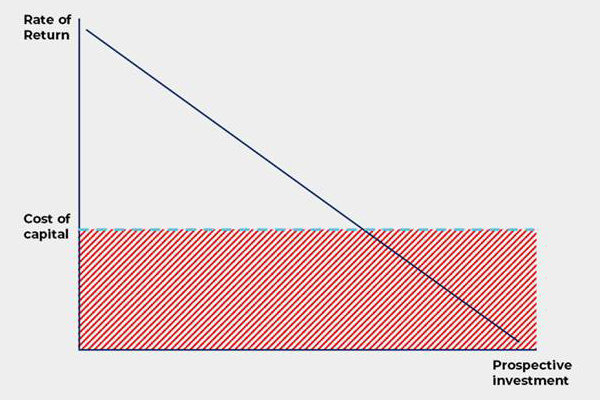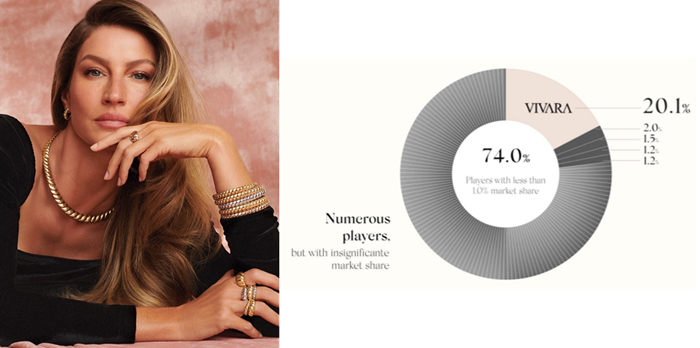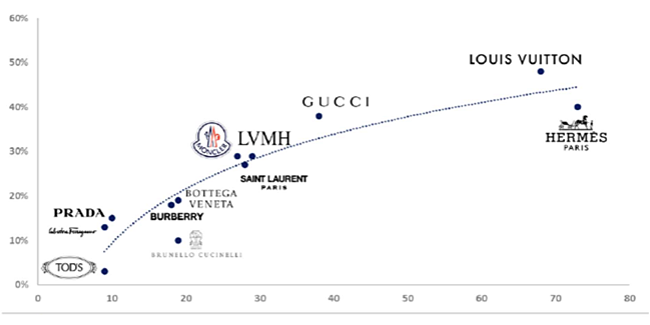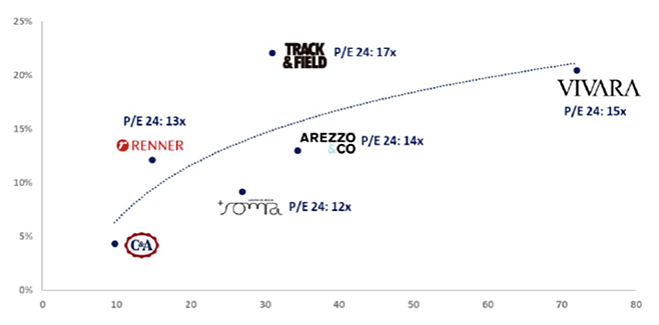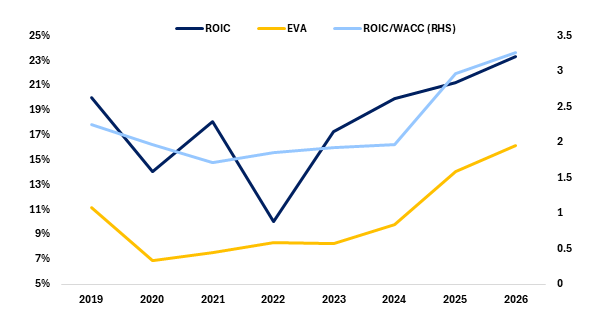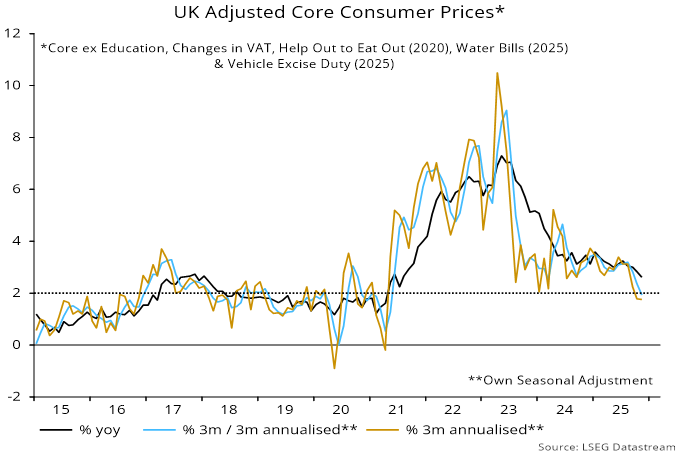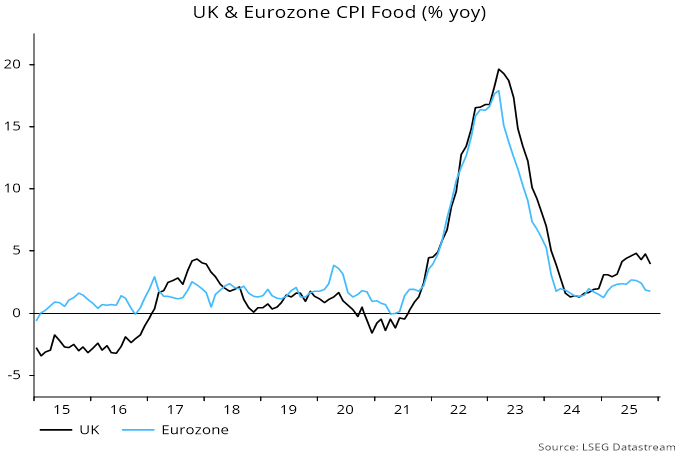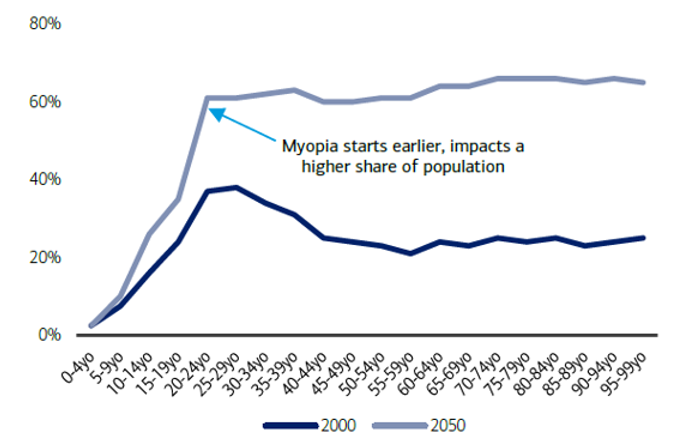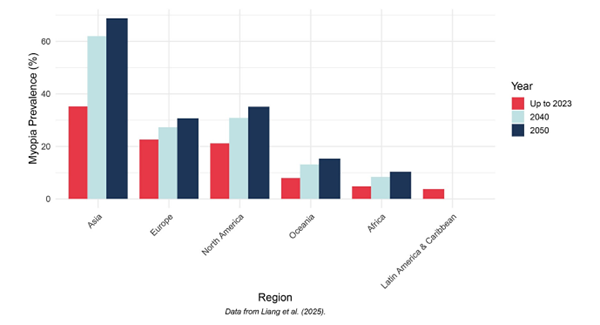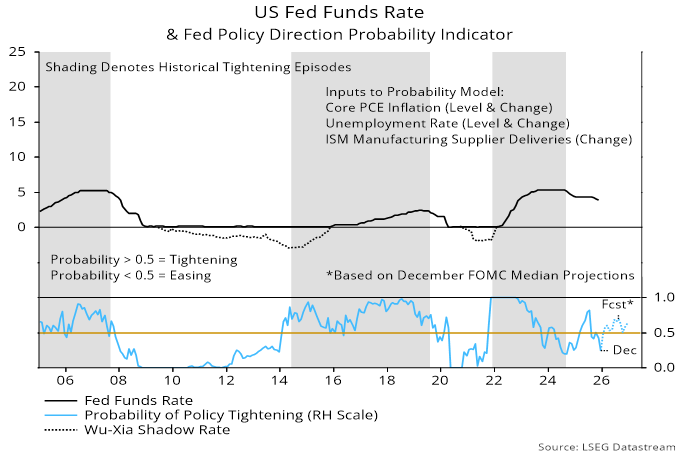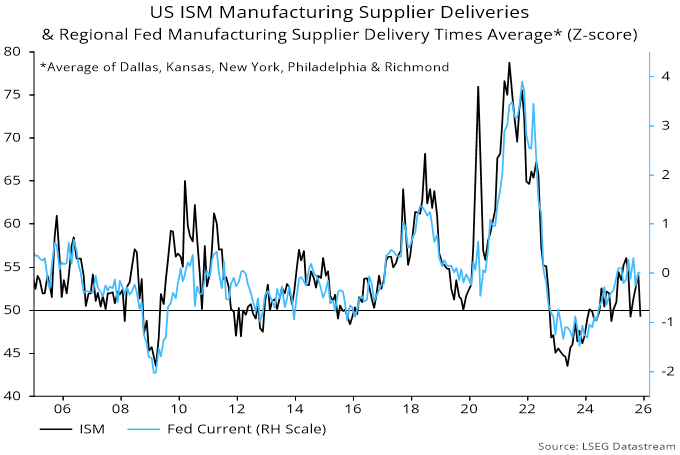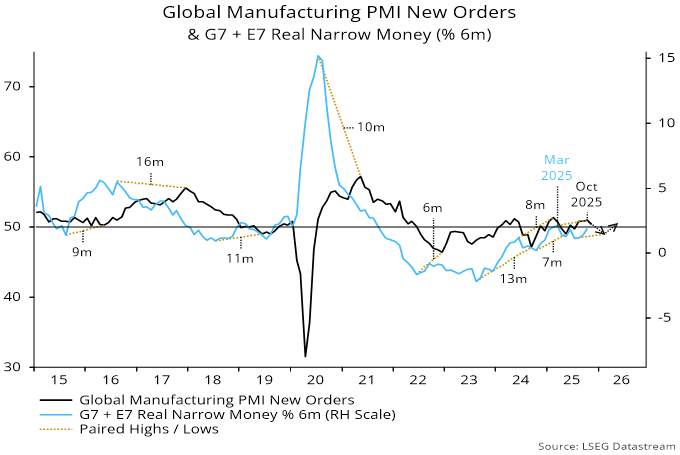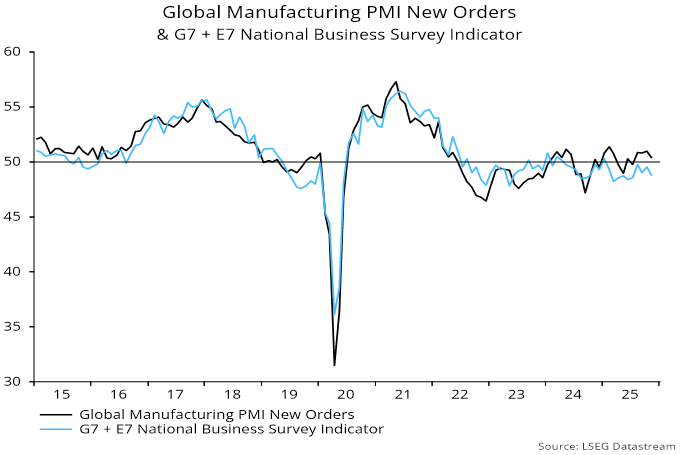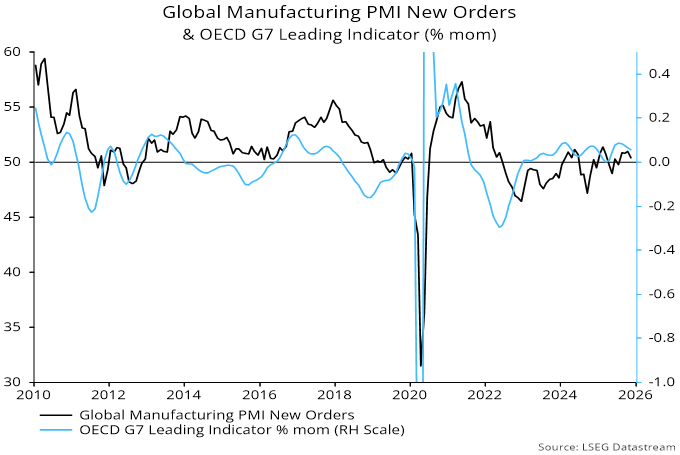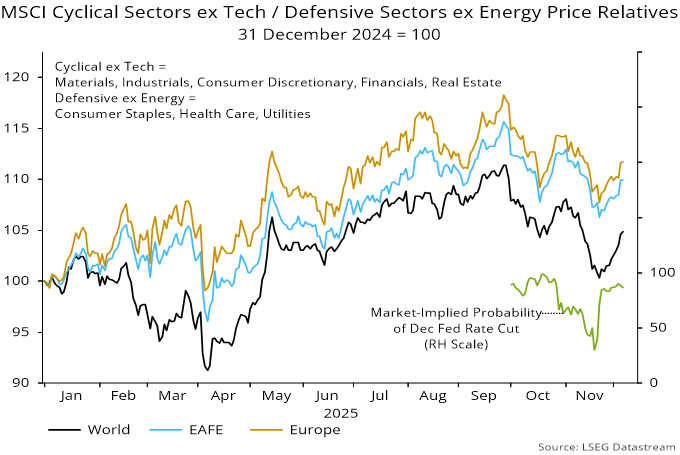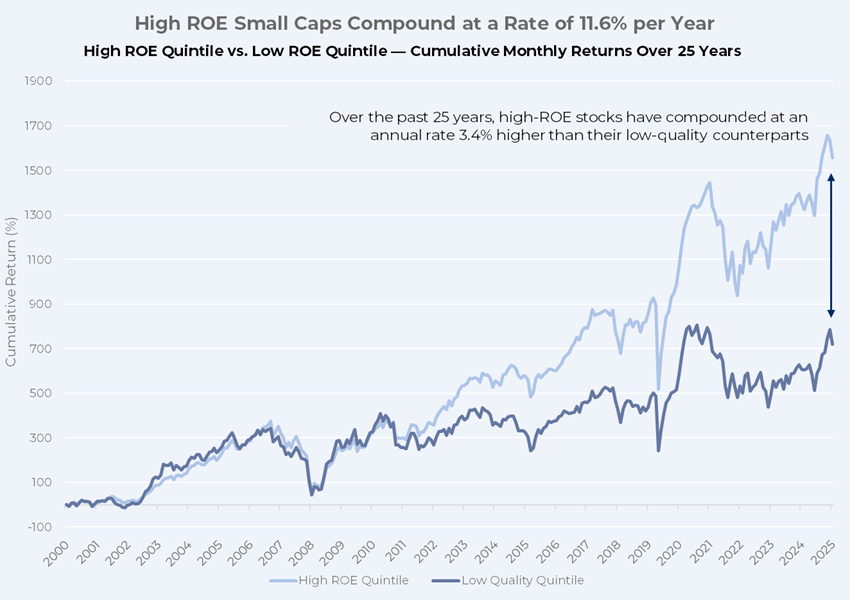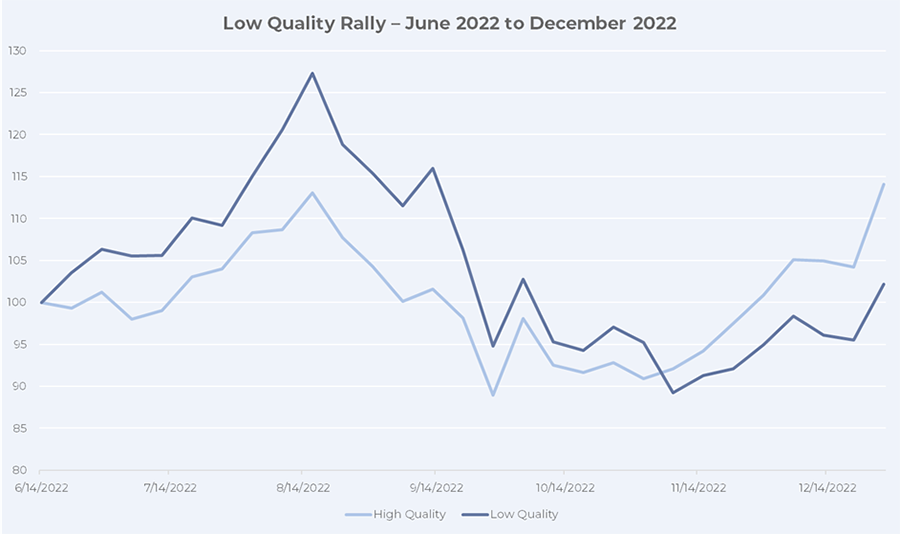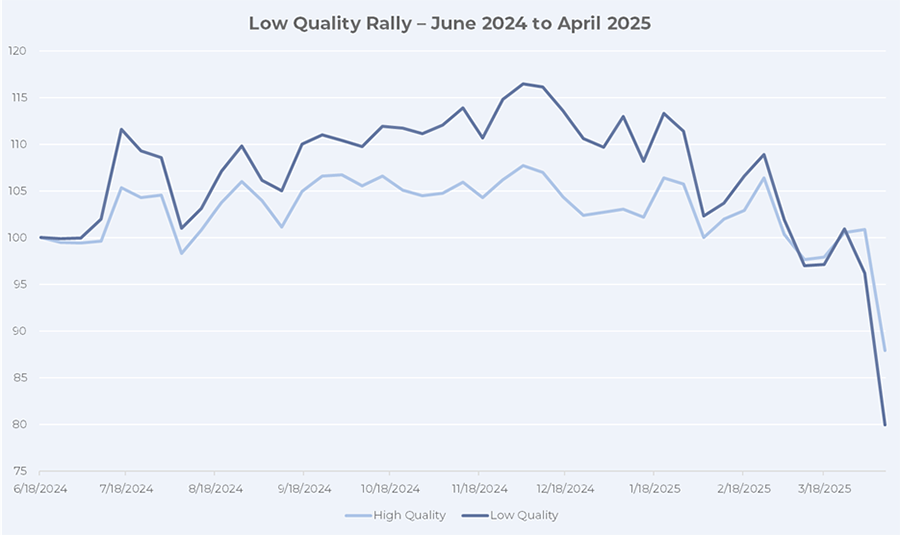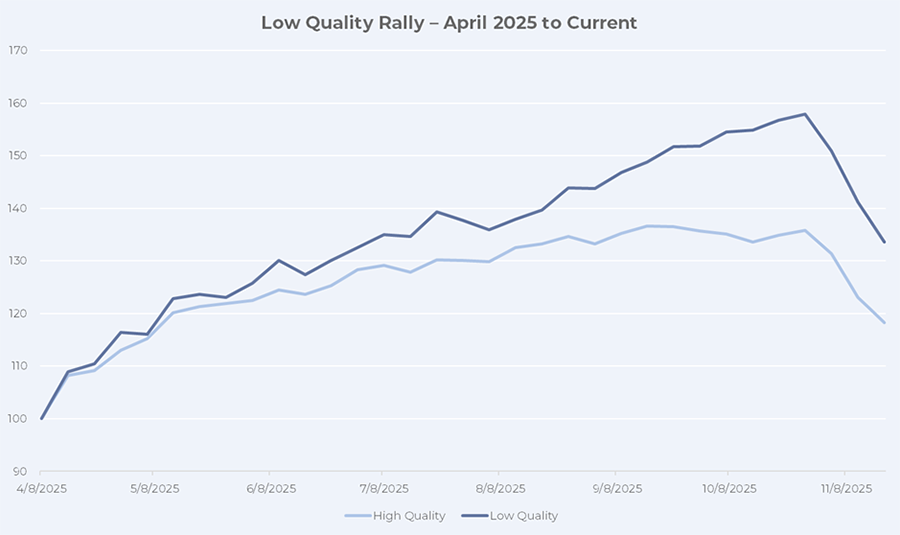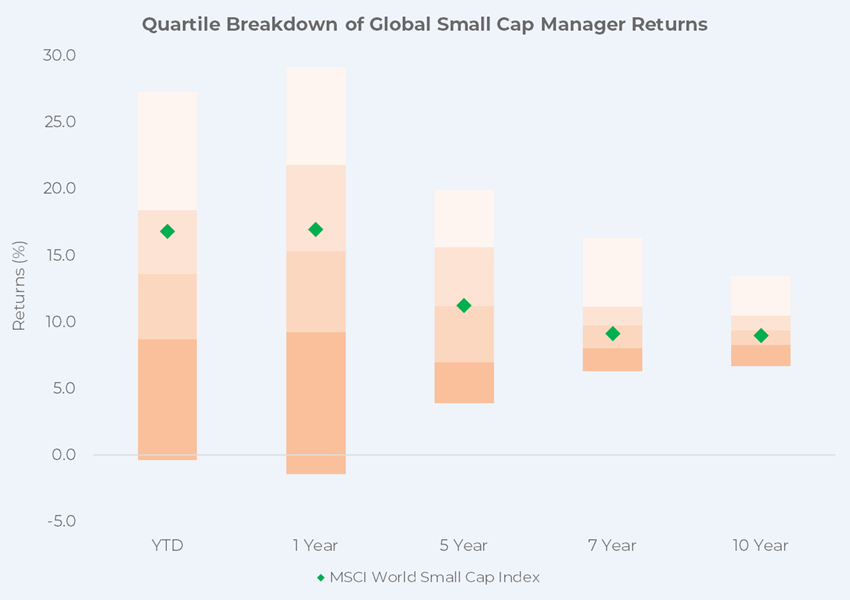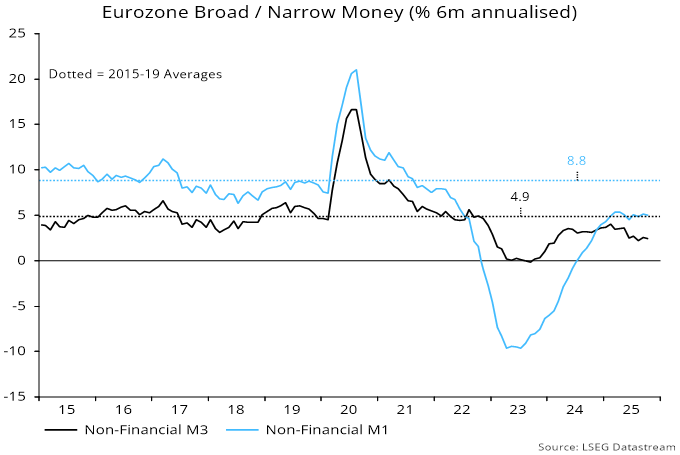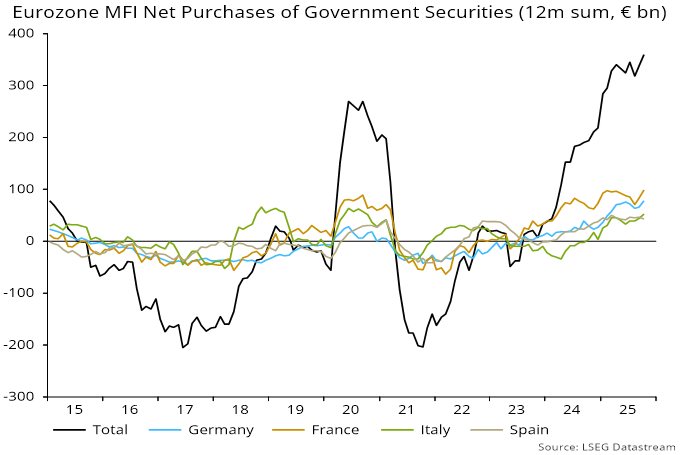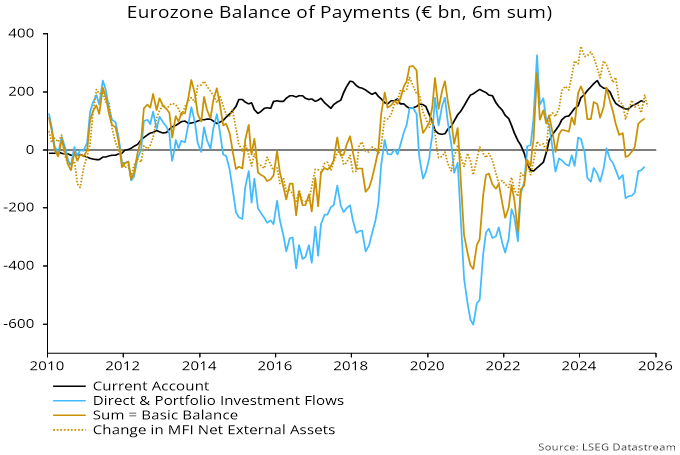
As we close out another year, we acknowledge it has been a difficult one for fundamental investors focused on quality companies.
How does Global Alpha define “quality”? We mean companies with:
- Revenue growth with a high portion of recurring revenues
- Healthy profit margins
- Strong balance sheet
- Dividend paying
- Fair valuation, ideally below the market multiples
Instead of quality, the market has been fixated on size (the bigger, the better), liquidity (the more liquid, the better) and momentum (what goes up will continue to go up).
In other words, it’s a very speculative market.
Are we in a bubble?
Ruchir Sharma, Chair of Rockefeller International, asked that exact same question in his piece in Financial Times – The four ‘O’s that shape a bubble. He described four characteristics that define a bubble, “four Os”: overvaluation, over-ownership, overinvestment and over-leverage. In our view, today’s market checks all four boxes.
Overvaluation
Consider the S&P 500 price-to-sales ratio. It is currently at an all-time high, well above the peak reached during the tech bubble in 2000. The market is paying record prices for each dollar of revenue.
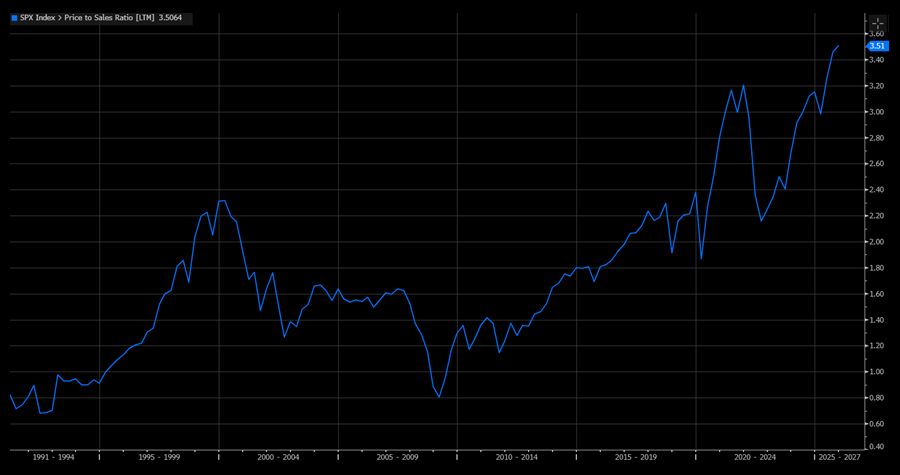
Source: Bloomberg
Over-ownership
US household stock ownership, as a share of financial assets, is also at record levels. According to Gallup, about 165 million Americans – roughly 62% of US adults – own stocks, an all-time high.
On top of that, foreign investors now hold a record share of US equities. The market has rarely, if ever, been this “crowded.”
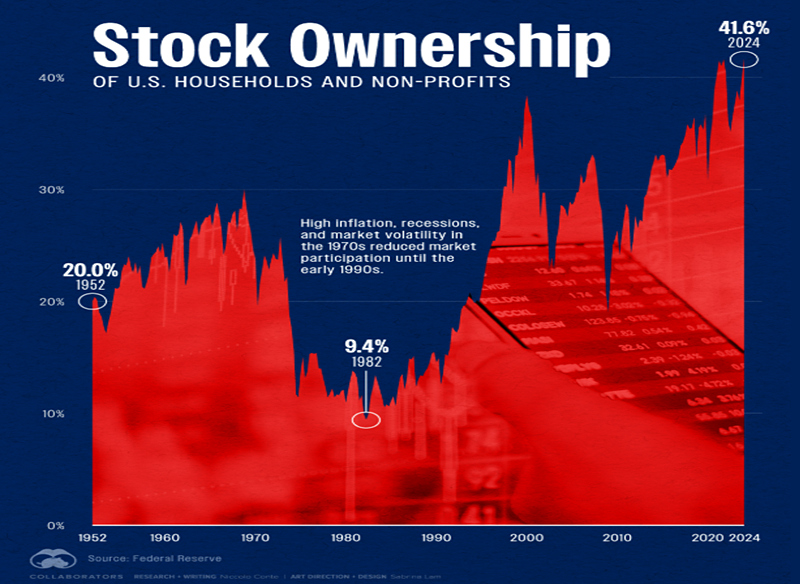
Source: Federal Reserve
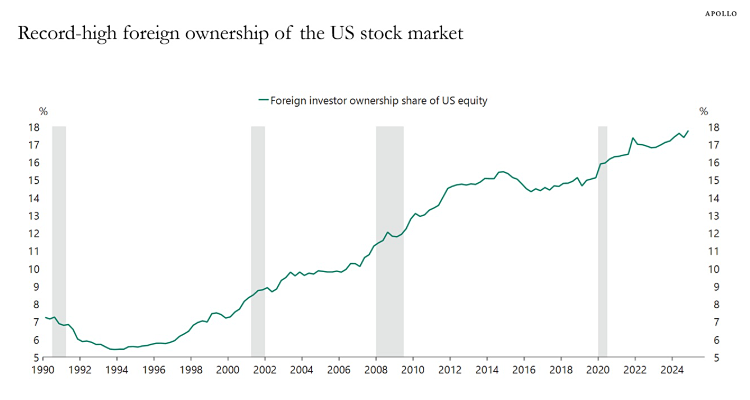
Sources: Federal Reserve, Macrobond, Apollo Chief Economist
Overinvestment
Technology investment has recently surpassed 6% of US GDP, eclipsing the previous record set in 2000. But the ultimate return on these investments is still uncertain, and there are signs that adoption is slowing rather than accelerating.
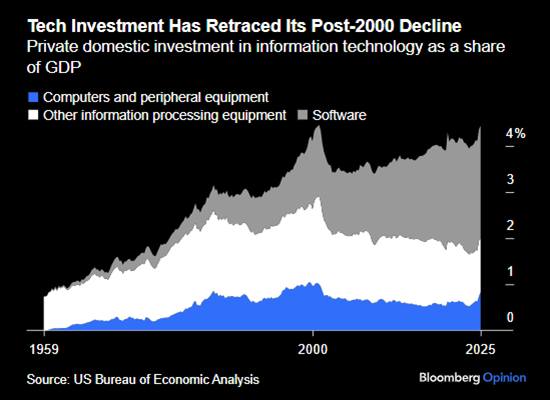
Over-leverage
We often hear about the enormous cash balances of the “Magnificent Seven.” However, much less attention is paid to the other side of their balance sheets: liabilities.
Amazon, Meta, and Microsoft are now net debtors, and they are increasingly financing capital expenditures with debt.
So, all four Os suggest a bubble. But who are we to know?
Surely, this time, it’ll be different! Right?
We recently looked at some assumptions underpinning the current enthusiasm and valuations.
The general consensus is that global semiconductor sales will grow at an annualized rate in the mid- to high-20% range over the coming decade.
During the strongest period until now – the 1990s, with the advent of the personal computer and the internet – annualized growth in semiconductor sales was about 15%.
Once again, the narrative is that “it’s different this time.”
What could deflate this bubble?
If we had to name one catalyst, it would be Nvidia, now the largest company in the world by market value, the most owned and traded stock globally, and the poster child for the AI wave.
What could go wrong with Nvidia?
In a word: Competition. More competition would likely mean lower market share, lower prices and lower profit margins.
Lessons from Novo Nordisk
The chart below shows the stock price of Novo Nordisk, which was the largest European company by market value just over a year ago. As a leader in GLP-1 “miracle drugs” used for weight loss and other health benefits, Novo Nordisk became the market’s favourite story.
As competition intensified and prices came under pressure, Novo Nordisk experienced a dramatic shift: its market value has dropped by 68% since its peak in June 2024.
What happened to this market leader?
Simple: more competition and lower prices. In 2024, Novo Nordisk earned €24.48 per share, up 29% from 2023. By mid-2024, analysts were expecting earnings of €30 per share in 2025, implying another 23% growth.

Source: Bloomberg
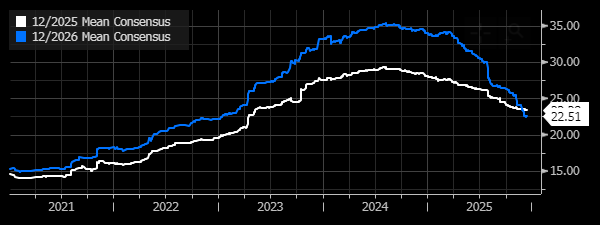
Source: Bloomberg
Instead, according to Bloomberg consensus estimates, earnings for 2025 will be around €23.38, a decline of approximately 4.5%, with a further decline expected in 2026. Novo Nordisk remains a great company, investors have just overpaid for it.
Lessons from Cisco
At the peak of the dot-com era, Cisco Systems was the company that defined the Internet age. It was the most valuable company in the world at the start of 2000, supplying the routers needed to handle internet traffic that was doubling every few months.
Despite that dominant position, Cisco’s stock only just regained its 2000 peak price last week – more than two decades later.
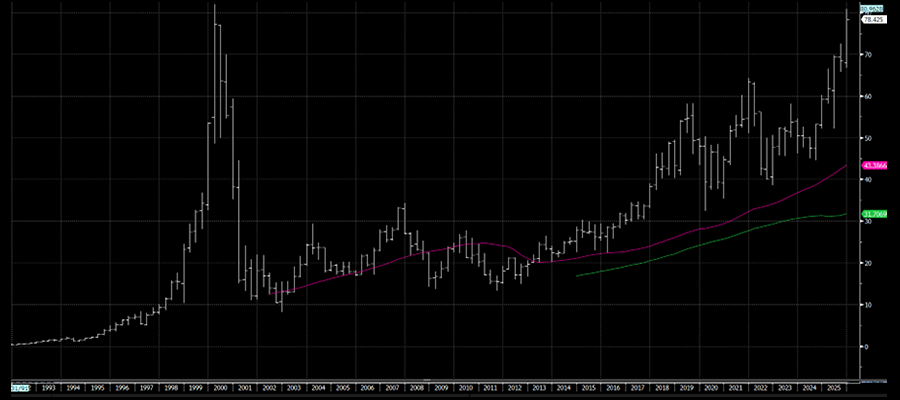
Source: Bloomberg
Looking at past trends, we do not expect Nvidia to maintain the market share and pricing power implied in current analyst forecasts. In our view (shaped by history that competition, regulation and changing narratives eventually catch up with even the most celebrated leaders), it is more prudent to diversify and pivot back to high-quality, reasonably valued companies with durable earnings and strong balance sheets
Lastly, we encourage you to read our previously published piece on quality: Time to take out the trash – Why high ROE matters in the long run. We breakdown how quality outperforms in the long-run and why it matters as an allocator.
We wish you a happy holiday season to you and your loved ones.
May 2026 bring peace and happiness to the world.

